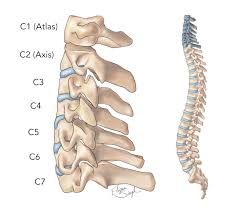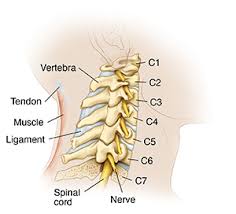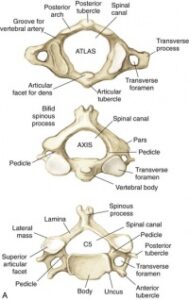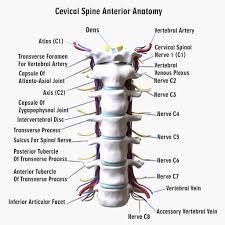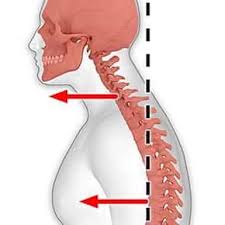

To know how does your forward head posture impact your C1 vertebrae, simply go through this article written by bestforwardheadposturefix.com.
With forward neck becoming rather common these days, your cervical spine is definitely being adversely impacted. It needs to be noted that your tech savvy lifestyle is to be blamed for the same.
Forward head posture (FHP) is a common issue today, thanks to our tech-heavy lifestyles.
Imagine this: you’re sitting at your desk, shoulders hunched, head jutting forward to get a better look at your screen. Over time, this posture can lead to some serious problems, especially for your C1 vertebra, also known as the atlas, and the rest of your cervical spine.
How does Forward Head Posture Impact Your C1 Vertebrae: Article Index:
1) A Sneak Peek at What Forward Neck Really Means?
2) What is the Role of C1 Vertebrae on Your Cervical Spine?
3) How does Forward Head Posture Damage your C1 Vertebrae?
4) How to Prevent Your C1 Vertebra from Getting Damaged because of Your Forward Head Posture?
5) FAQs on C1 Vertebrae & Poor Neck Posture
6) Takeaway
A Sneak Peek at What Forward Neck Really Means?
Here is a simple explanation: you’re engrossed in your favorite show, head craning forward, totally absorbed. That’s FNP in action! It’s when your head juts out in front of your shoulders instead of aligning directly above them.
Sounds simple, right? But this seemingly innocent posture can pack a punch!
According to science, your head weighs about 10-12 pounds. Imagine carrying a bowling ball around all day. Now, for every inch your head moves forward, it feels like it’s doubling in weight!
So, if your head is three inches forward, your neck feels like it’s carrying a whopping 36 pounds. Ouch!
Researchers have found that FNP can lead to some serious issues. It strains your neck muscles, causing pain and stiffness. Your poor cervical spine – the neck’s backbone hero – has to work overtime, leading to wear and tear.
And it doesn’t stop there. Studies show that FNP can even affect your breathing by compressing your airway. Talk about a domino effect!
What is the Role of C1 Vertebrae on Your Cervical Spine?
Named after the Greek god who held up the sky, this little bone plays a mighty role in your cervical spine.
The C1 vertebra is the very first bone in your cervical spine, right at the top of your neck. It is uniquely shaped to support the skull and facilitate a range of head movements. Imagine trying to nod “yes” or shake your head “no” without it – impossible, right?
Scientific research highlights that the C1 vertebra is crucial for the flexibility and function of your neck. It forms a pivotal joint with the C2 vertebra (the axis), allowing your head to rotate. Without this perfect partnership, turning your head side-to-side would be a struggle.
Moreover, the C1 vertebra helps protect the spinal cord. The spinal cord passes through a ring in the C1 and continues down the spine, transmitting nerve signals that control movement and sensation.
If the C1 isn’t aligned properly, it can lead to nerve compression, causing pain, tension headaches, and even dizziness.
Maintaining good posture and neck health is essential to keep the C1 and the entire cervical spine in top shape.
Regular exercises and mindful habits can make a world of difference, ensuring your atlas supports your world effortlessly.
So, take care of your C1 – it’s doing a lot more for you than you might realize!
How does Forward Head Posture Damage your C1 Vertebrae?
Forward head posture (FHP) is a common condition in today’s digital age, often resulting from prolonged use of computers and smartphones.
While it might seem like a minor issue, FHP can significantly impact the C1 vertebra, also known as the atlas, and the entire cervical spine.
The C1 vertebra is the first cervical vertebra, playing a crucial role in supporting the skull and facilitating head movement.
Its unique structure allows for the nodding motion of the head and forms a pivotal joint with the C2 vertebra, enabling head rotation.
However, FHP disrupts the natural alignment of the cervical spine, placing undue stress on the C1 vertebra.
Scientific research has shown that FHP increases the load on the cervical spine.
For every inch the head moves forward, the weight exerted on the neck muscles and vertebrae doubles. This increased load primarily affects the C1 vertebra because it is the topmost vertebra supporting the skull’s weight.
Over time, this abnormal pressure can lead to several issues:
- Muscle Strain and Fatigue: The muscles supporting the cervical spine, particularly those around the C1 vertebra, are forced to work harder to maintain the head’s position. Studies have found that this can lead to chronic muscle strain, fatigue, and pain in the neck and upper back.
- Joint Misalignment: The excessive forward tilt caused by FHP can lead to joint misalignment in the cervical spine. Poor neck posture therefore lays stress on the hip joint. The C1 vertebra is particularly vulnerable to this misalignment due to its role in supporting the skull and its unique articulation with the C2 vertebra. Misalignment can cause joint dysfunction, leading to restricted head movement and discomfort.
- Nerve Compression: Research has indicated that FHP can cause compression of the nerves exiting the cervical spine. The C1 vertebra is closely associated with several critical nerves that control head and neck movements and sensations. Compression of these nerves can lead to symptoms such as headaches, numbness, and tingling in the arms and hands.
- Degenerative Changes: Prolonged FHP can accelerate degenerative changes in the cervical spine. The increased mechanical load on the C1 vertebra and surrounding structures can contribute to conditions like osteoarthritis and disc degeneration, further compromising spinal health.
A study published in the Journal of Physical Therapy Science highlights the importance of maintaining proper head posture to prevent these issues.
The researchers found that corrective exercises and ergonomic adjustments can significantly reduce the strain on the cervical spine, including the C1 vertebra.
In conclusion, forward head posture can cause significant damage to the C1 vertebra by increasing mechanical stress, leading to muscle strain, joint misalignment, nerve compression, and degenerative changes.
Addressing FHP through awareness, ergonomic adjustments, and targeted exercises is crucial for maintaining cervical spine health and preventing long-term complications.
How to Prevent Your C1 Vertebra from Getting Damaged because of Your Forward Head Posture?
Let’s dive into how you can keep your C1 vertebra, the atlas of your neck, in tip-top shape despite the lure of screens and slouches.
Forward head posture (FHP) might seem like a minor inconvenience, but it can lead to serious issues if not addressed. Here’s how you can prevent damage to your C1 vertebra.
- Ergonomic Workspace Setup
First things first, let’s talk about your workspace. Position your computer monitor at eye level. This simple adjustment can significantly reduce the strain on your neck.
A study published in Work: A Journal of Prevention, Assessment & Rehabilitation highlighted that ergonomic interventions can decrease neck pain and improve posture.
So, ensure your chair, desk, and screen are set up to keep your head naturally aligned.
- Mind Your Posture
Be mindful of your posture throughout the day. Imagine a string pulling you up from the top of your head, aligning your ears with your shoulders. Regularly check yourself and adjust.
Research from the Journal of Physical Therapy Science suggests that awareness and regular posture checks can correct FHP and reduce associated pain.
- Strengthening Exercises
Incorporate neck and upper back exercises into your routine. Strengthening these muscles can help support proper head alignment. Chin tucks are a great exercise: simply tuck your chin slightly down and back, as if making a double chin.
Hold for a few seconds and repeat. According to a study in Clinical Biomechanics, strengthening exercises can improve cervical alignment and decrease neck pain.
- Stretching Routines
Stretching can also be a game-changer. Stretch the muscles at the front of your neck and chest, which can become tight from FHP.
Neck stretches, like gently pulling your head towards your shoulder, can relieve tension and improve flexibility.
The Journal of Orthopaedic & Sports Physical Therapy found that stretching combined with strengthening exercises is effective in improving posture and reducing neck discomfort.
- Regular Breaks
Take regular breaks, especially if you are working at a desk all day. Stand up, move around, and do some light stretching every 30 minutes. This can prevent stiffness and help maintain proper posture.
The American Journal of Physical Medicine & Rehabilitation emphasizes that regular movement breaks are crucial for preventing musculoskeletal problems.
- Professional Help
If you are already experiencing discomfort, consider consulting a physical therapist or chiropractor. They can provide personalized exercises and adjustments to help correct your posture.
A study in the Journal of Manipulative and Physiological Therapeutics found that chiropractic adjustments can improve head posture and reduce neck pain.
By integrating these tips into your daily routine, you can protect your C1 vertebra and maintain a healthy, pain-free neck.
Remember, small changes can lead to significant improvements. So, sit up straight, take those breaks, and give your neck the love it deserves!
FAQs on C1 Vertebrae & Poor Neck Posture
Forward head posture (FHP) is a common postural deviation where the head is positioned forward of the body’s center of gravity. This misalignment can significantly impact the cervical spine, particularly the C1 vertebra, also known as the atlas. Below are five unique frequently asked questions (FAQs) regarding how FHP affects the C1 vertebra:
Q1: How does forward head posture affect the alignment of the C1 vertebra?
Forward head posture leads to hyperextension of the upper cervical vertebrae (C1–C3) and flexion of the lower cervical vertebrae (C4–C7). This misalignment disrupts the natural curvature of the cervical spine, placing additional stress on the C1 vertebra and its associated structures.
Q2: What are the potential consequences of FHP on the C1 vertebra’s intervertebral disc?
The altered alignment from FHP increases the load on the intervertebral discs, including that between the C1 and C2 vertebrae. This heightened pressure can accelerate disc degeneration, potentially leading to herniation and nerve impingement.
Q3: Can forward head posture lead to muscle imbalances affecting the C1 vertebra?
Yes, FHP often results in muscle imbalances, such as weakening of the deep cervical flexors and tightening of the posterior cervical extensors. These imbalances can alter the mechanical properties of the cervical spine, including the C1 vertebra, leading to discomfort and potential dysfunction.
Q4: How does FHP impact the stability of the C1 vertebra?
The misalignment caused by FHP can compromise the stability of the cervical spine, including the C1 vertebra. This instability may increase the risk of spinal degeneration and associated pain.
Q5: What interventions can help correct the effects of FHP on the C1 vertebra?
Corrective exercises targeting posture improvement, manual therapy, and ergonomic adjustments can help alleviate the adverse effects of FHP on the C1 vertebra. These interventions aim to restore proper alignment and reduce associated discomfort.
Understanding the impact of forward head posture on the C1 vertebra is crucial for developing effective strategies to mitigate its adverse effects and promote spinal health.
Takeaway:
In conclusion, forward head posture (FHP) can have a profound impact on your C1 vertebra, leading to a cascade of problems if left unaddressed.
This misalignment places excessive stress on the delicate structure of the C1, causing muscle strain, joint misalignment, nerve compression, and potential degenerative changes.
However, the good news is that there are proactive steps you can take to mitigate these issues and protect your cervical spine.
Start by setting up an ergonomic workspace to ensure your head remains in a neutral position.
Incorporate regular posture checks, and make a habit of exercises that strengthen and stretch your neck and upper back muscles.
Taking frequent breaks to move and stretch can prevent stiffness and maintain alignment.
If discomfort persists, seeking professional help from a physical therapist or chiropractor can provide targeted solutions to correct your posture and alleviate pain.
By being mindful of your posture and making these simple adjustments, you can significantly reduce the strain on your C1 vertebra and promote long-term neck health.
Remember, small, consistent efforts can lead to big improvements, keeping your neck strong, aligned, and pain-free. So, embrace these changes and give your cervical spine the care it deserves!
References:
